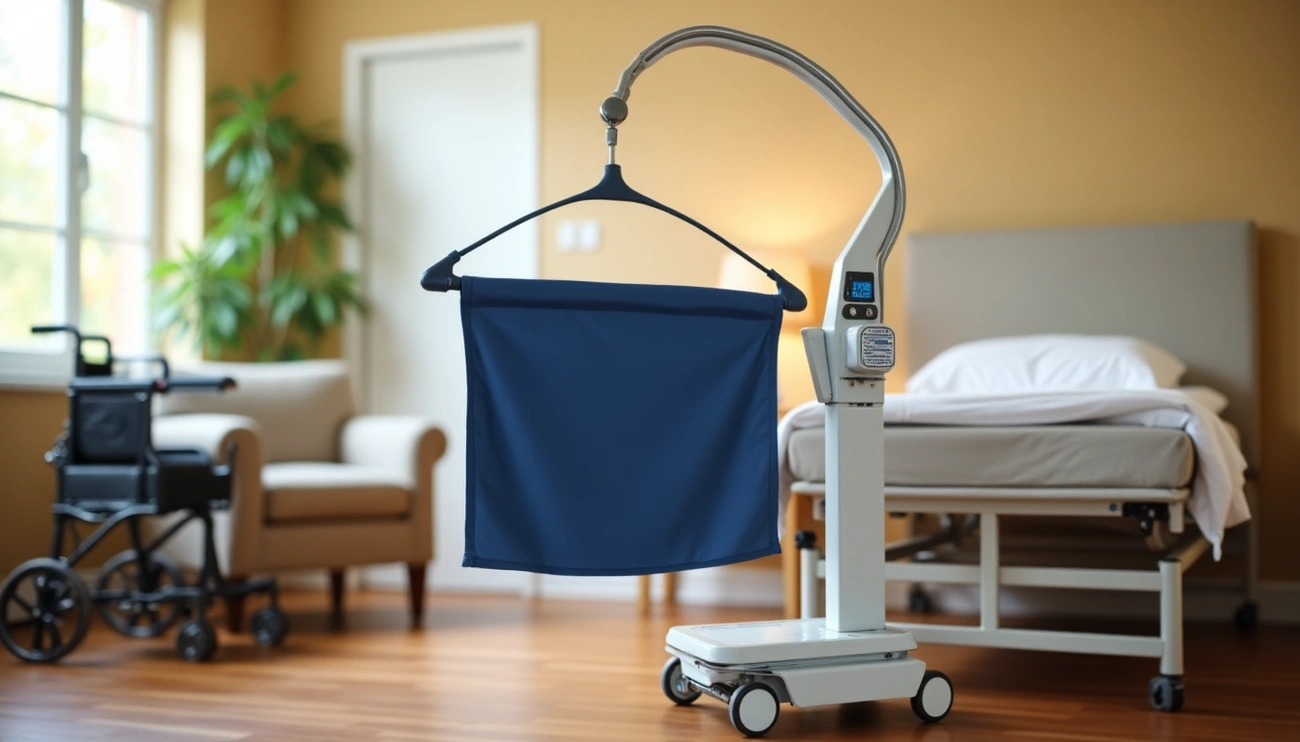Approximately 80% of households with older adults are struggling financially or at risk of financial insecurity. This statistic highlights the widespread need for financial assistance among seniors across America.
Many seniors remain unaware of the benefits they’re eligible to receive. Medicare beneficiaries with limited income may qualify for the Extra Help program, which provides up to $5,000 annually for prescription drug costs. Programs like the Supplemental Nutrition Assistance Program (SNAP) help seniors purchase nutritious food, while the Low-Income Home Energy Assistance Program (LIHEAP) assists with energy bills.
The Eldercare Locator connects older Americans and their caregivers with trustworthy local support resources for meals, home care, and transportation. The National Council on Aging (NCOA) offers BenefitsCheckUp®, a free online service that screens seniors with limited income for benefits, including over 2,000 public and private programs from all 50 states and the District of Columbia.
This guide explains how to access financial help for low income seniors, identify qualifying benefits for senior citizens, and navigate the application process for these programs. The following sections detail the step-by-step approach to securing financial assistance, whether through free programs or targeted aid packages.
Understanding your financial needs serves as the first step toward determining which programs best suit your situation.
Understand Your Financial Needs First
Taking stock of your current financial situation is essential before seeking financial help for seniors. Studies show many older adults struggle with basic needs despite having worked their entire lives.
Identify your monthly expenses and income
Creating a detailed budget helps you understand exactly where your money goes each month. Start by listing all income sources:
- Social Security benefits
- Supplemental Security Income (SSI)
- Pensions
- Retirement account withdrawals
- Part-time employment income
Track your actual spending for a few months to ensure accuracy. This practice often reveals that seniors underestimate their expenses. Retiree households spent an average of $60,087 in 2023, which was 3.9% higher than the previous year.
When categorizing expenses, divide them into:
- Essential expenses: Housing, healthcare, utilities, food, transportation
- Discretionary expenses: Entertainment, dining out, travel, hobbies
- Periodic expenses: Insurance premiums, property taxes, home repairs
Knowing these numbers provides clarity about potential gaps between income and necessary expenses—the first step toward finding appropriate financial assistance.
Assess medical, housing, and food needs
Healthcare costs represent a significant financial burden for many seniors. The average 65-year-old retired couple needs approximately $315,000 for healthcare costs in retirement. Medicare beneficiaries typically spend over 40% of their Social Security income on out-of-pocket healthcare expenses.
Housing generally represents the largest expense category for retirees, accounting for over 36% of annual expenditures or approximately $21,445 annually. Consider whether your current housing situation is sustainable or if alternatives might reduce costs.
Food expenses average $7,714 annually for retiree households. Programs like SNAP and Meals on Wheels can help lower these costs while ensuring proper nutrition. Seniors who are food insecure are over 50% more likely to report a heart attack and 40% more likely to experience congestive heart failure.
Determine if you live alone or have caregiver support
Your living arrangement significantly impacts your financial needs. Living alone means bearing all household expenses yourself. Downsizing or exploring senior living communities might make financial sense in certain situations.
If you receive care from family members, consider the hidden financial impact. Caregivers often experience significant financial consequences, with the average caregiver spending $7,200 annually providing care. Moreover, 39% of caregivers stop working to provide care, which can reduce household income dramatically.
Caregivers who continue working while providing high levels of care are three times more likely to experience work productivity loss. This impacts not only current finances but also long-term retirement security for the entire family.
By thoroughly assessing these three areas—your monthly budget, essential needs, and living arrangement—you’ll have a clearer picture of what types of financial help for low income seniors might benefit you most. This detailed understanding becomes the foundation for finding the right programs for your unique situation.
Find the Right Programs for Your Situation
Several resources exist specifically to connect seniors with appropriate benefits after they’ve assessed their financial situation. These tools help match older adults with programs designed for their particular needs.
Use BenefitsCheckUp and Eldercare Locator
The National Council on Aging’s BenefitsCheckUp® serves as a comprehensive, free online tool that connects older adults with benefits they might qualify for. This confidential service helps seniors find programs based on location and personal circumstances.
To use BenefitsCheckUp effectively, seniors need to:
- Enter their ZIP code and select categories of interest
- Answer additional questions to personalize options
- Receive a personalized eligibility report showing potential benefits
- Apply online through agency websites or contact programs directly
Initially, users can browse benefits by entering basic information, but programs like SNAP (formerly Food Stamps), Medicare Low-Income Subsidy, and Medicare Savings Programs may require additional details to determine eligibility.
The Eldercare Locator, a public service of the Administration for Community Living, provides another valuable resource. This nationwide service connects seniors and their caregivers with trustworthy local support resources. Users simply enter their zip code or city and state to find relevant help in their community.
Explore local and state-specific programs
State and local governments offer numerous programs tailored to their residents’ needs. Area Agencies on Aging (AAAs) provide services for people age 60 and older along with their family members and caregivers.
Many states maintain Aging and Disability Resource Centers (ADRCs) that help seniors find and apply for long-term care programs. These centers serve as one-stop shops for navigating complex systems of care.
The 2-1-1 hotline service, available in many states, connects people directly with needed services. Callers can speak with a real person who understands local programs and eligibility requirements.
Certain states offer additional specialized assistance. The Texas Health Information, Counseling and Advocacy Program, for example, helps seniors find information and enroll in Medicare, Medicaid, and long-term care options.
Look into nonprofit and community-based help
Beyond government programs, numerous nonprofits provide financial support. The AARP Foundation works to tackle senior poverty through programs helping older adults with housing, food, and healthcare needs. Their Senior Community Service Employment Program (SCSEP) helps seniors find employment opportunities matching their skills.
Local community organizations frequently offer specialized assistance programs. Los Angeles County provides the Countywide Benefits Entitlement Services Team (CBEST), connecting older adults to comprehensive services that increase income and prevent homelessness.
Utility assistance programs exist in many communities to help seniors struggling with energy bills. Some locations even offer Utility User Tax exemptions for adults 62 years and older who receive Supplemental Security Income benefits.
The HealthWell Foundation assists seniors with chronic conditions by providing financial help for healthcare expenses through grants and copayment assistance programs. This support ensures seniors on fixed incomes can access necessary medical treatments.
Systematically exploring these three categories of resources helps identify multiple forms of financial assistance tailored to specific situations.
Apply for Financial Help Step by Step
Gathering the right paperwork is essential for a successful benefit application. The Social Security Administration and other agencies require specific documentation to verify eligibility. For most benefit applications, seniors need:
- Identification documents: Social Security card, birth certificate or other proof of age (original documents or agency-certified copies required)
- Citizenship verification: U.S. birth certificate, naturalization certificate, or legal residency documentation
- Financial records: Recent bank statements, W-2 forms, tax returns, and proof of all income sources
- Medical documentation: Records verifying health conditions, disabilities, and related expenses
- Housing information: Lease agreements, property tax bills, or mortgage statements
Don’t delay applying if some documents are missing. Agencies can often help obtain missing information and may verify certain details electronically.
Start with federal programs like SSI, SNAP, and Medicaid
Federal programs form the foundation of financial assistance for seniors. Apply for these programs first:
- Supplemental Security Income (SSI): Provides monthly payments to older adults with limited income or resources. Applications can be started online through the Social Security Administration website or by calling 1-800-772-1213.
- Supplemental Nutrition Assistance Program (SNAP): Helps low-income seniors purchase food. Each state manages its own SNAP program, with application processes varying by location. Some states offer the Elderly Simplified Application Project (ESAP) to streamline applications for older adults.
- Medicaid: Provides health coverage to millions of low-income seniors. Applications are processed through state Medicaid offices or the Health Insurance Marketplace. Required documentation includes proof of identity, citizenship, age, income, and assets.
Apply online, by phone, or through local agencies
Most financial aid programs offer multiple application methods:
Online applications are typically fastest, available 24/7, and allow users to save progress. The Social Security Administration offers online applications during specific hours: Monday-Friday (5 a.m.-1 a.m.), Saturday (5 a.m.-11 p.m.), and Sunday (8 a.m.-11:30 p.m.) Eastern Time.
Phone applications provide direct assistance from program representatives. For Social Security benefits, call 1-800-772-1213 (TTY 1-800-325-0778).
In-person help is available through local offices and community agencies. Area Agencies on Aging, SHIP counselors, and senior centers often provide application assistance at no cost.
Application processing times vary by program. SNAP typically processes applications within 30 days, while other programs may take longer. Applying as soon as possible helps avoid gaps in assistance.
Combine Multiple Benefits for Maximum Support
Seniors can dramatically improve their financial situation by layering multiple benefit programs together. Combining benefits creates a stronger safety net compared to relying on a single source of assistance.
How to layer Medicare, Medicaid, and Extra Help
Seniors with limited income may qualify for both Medicare and Medicaid simultaneously. This dual eligibility provides significant advantages, as Medicare pays first for covered services and Medicaid covers remaining costs. For those with full Medicaid coverage, enrollment in Extra Help happens automatically.
The Extra Help program reduces prescription drug costs through Medicare Part D, covering premiums, deductibles, and copayments. In 2025, people qualifying for Extra Help will pay no plan deductible, no premiums, and no more than $12.15 for brand-name medications and $4.90 for generics.
Some Medicare Advantage plans offer flex cards that function as food allowance cards and can help pay for utilities, transportation to medical appointments, and more. To maximize these benefits, seniors should compare Medicare drug plans to find one with the lowest overall costs.
Use food, housing, and utility programs together
Combining assistance programs across different basic needs creates comprehensive support. Seniors can layer:
- The Emergency Home Energy Assistance Program for the Elderly (EHEAP) to cover energy bills
- Housing assistance alongside utility bill help
- SNAP benefits with Medicare flex card food allowances
This approach ensures all essential needs are addressed. In some cases, seniors might qualify for help with pre-paying energy bills, purchasing heating/cooling equipment, and even temporary emergency shelter.
Avoid benefit overlap and disqualification
When receiving multiple benefits, seniors must carefully navigate eligibility rules. The Medicaid “spend down” process requires reducing countable assets to meet eligibility thresholds. Improper asset transfers during Medicaid’s five-year look-back period can result in penalties and delayed benefits.
To prevent disqualification, seniors should document current income and resources accurately. Those living with family need to establish a written rental agreement showing they pay their proportional share of expenses to avoid reductions in SSI benefits. Additionally, completing timely renewals and reporting income changes promptly helps maintain eligibility for all programs.
With careful planning, seniors can create a comprehensive financial support system combining multiple benefits while staying compliant with all program requirements.
Maintain and Renew Your Benefits
Securing financial assistance represents only half the battle for seniors. Maintaining these benefits requires vigilance and proper record-keeping. Many seniors lose valuable benefits because they miss renewal deadlines or fail to report important changes.
Track renewal dates and required updates
Staying current with renewal dates proves critical for uninterrupted benefits. Most programs send renewal packets by mail when it’s time to renew coverage. For Medicaid, renewal dates can be checked and completed online up to 60 days before the due date. Missing deadlines allows submissions up to 90 days after coverage ends, though this creates potential gaps in benefits.
Different programs follow varying renewal schedules. CalFresh (SNAP) typically requires yearly recertifications and semi-annual reporting. Households with only elderly or disabled members without earned income may qualify for extended recertification periods—sometimes reaching 36 months.
Report changes in income or living situation
Most benefit programs mandate prompt reporting of changes. SSI recipients must report changes within 10 days after the month in which the change occurred. Reportable changes include:
- Address or living arrangement changes
- Income changes (including spouse’s income)
- Resource changes
- Household composition changes
- Marriage status changes
- Admission to institutions like hospitals or nursing homes
Failing to report changes timely can result in overpayments requiring repayment, or penalties reducing SSI payments by $25 to $100 for each violation.
Get help from SHIP or local senior centers
The complexity of these systems makes professional assistance valuable. State Health Insurance Assistance Programs (SHIP) provide free, unbiased counseling from trained staff or volunteers. These counselors help review benefit options, navigate Medicare coverage, and protect beneficiary rights.
Senior centers function as community hubs connecting older adults with essential services. More than 60% of senior centers serve as designated focal points for delivering Older Americans Act services, allowing access to multiple services in one location. Many centers offer benefits counseling, application assistance, and tracking services for renewal dates.
Online portals like BenefitsCal.com simplify benefits maintenance by allowing users to check benefit amounts, view renewal dates, and submit verification documents directly from computers or smartphones.
Conclusion
Financial security remains achievable for seniors despite widespread challenges. Accessing financial help requires patience and persistence, but the benefits justify the effort. This guide outlines practical steps to strengthen seniors’ financial situations.
Understanding specific financial needs serves as the critical first step. Many seniors miss eligible benefits because they haven’t accurately assessed their circumstances. Calculating monthly expenses, income, and specific needs for healthcare, housing, and food creates a clear roadmap for pursuing financial assistance.
The complex network of available programs becomes navigable through systematic approaches. BenefitsCheckUp, Eldercare Locator, and local agencies provide guidance tailored to individual circumstances. These resources help identify programs that might otherwise be overlooked, potentially adding thousands of dollars annually to seniors’ budgets.
Preparation significantly impacts application success rates. Gathering proper documentation beforehand and understanding application requirements increases approval chances. Applying for multiple programs simultaneously creates a comprehensive safety net rather than relying on a single assistance source.
Combining various benefits creates a robust financial support system. Medicare, Medicaid, and Extra Help work together with food, housing, and utility programs to address different aspects of seniors’ financial needs. This layered approach provides lasting security when properly maintained.
Maintaining benefits through proper renewal procedures ensures continuous support. Setting calendar reminders for important dates and promptly reporting changes prevents disruptions in critical services. Assistance from SHIP counselors or senior centers makes this ongoing process manageable.
Financial assistance for seniors exists in abundance – the challenge lies in knowing where to look and how to apply. Time invested in securing these benefits pays dividends through improved quality of life.
FAQs
Q1. What financial assistance programs are available for senior citizens? There are several programs available, including Supplemental Security Income (SSI), Supplemental Nutrition Assistance Program (SNAP), Medicaid, and Medicare Extra Help. These programs can provide monthly cash benefits, food assistance, healthcare coverage, and help with prescription drug costs.
Q2. How can seniors determine which financial aid programs they qualify for? Seniors can use online tools like BenefitsCheckUp or contact their local Area Agency on Aging. These resources help identify eligible programs based on individual circumstances, including income, age, and specific needs for healthcare, housing, and food.
Q3. What documents are typically required when applying for senior financial assistance? Common required documents include identification (such as a Social Security card or birth certificate), proof of income (bank statements, tax returns), medical records, and housing information (lease agreements or mortgage statements). It’s best to gather these documents before starting the application process.
Q4. Can seniors receive multiple benefits simultaneously? Yes, seniors can often combine multiple benefits for maximum support. For example, it’s possible to receive both Medicare and Medicaid, along with programs like SNAP for food assistance and utility bill help. However, it’s important to understand how different programs interact to avoid benefit overlap or disqualification.
Q5. How often do seniors need to renew their benefits? Renewal requirements vary by program. Most benefits require annual recertification, but some programs for seniors may have extended periods. It’s crucial to track renewal dates, report any changes in income or living situation promptly, and complete necessary paperwork on time to maintain continuous coverage.




